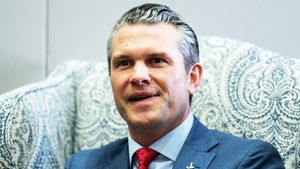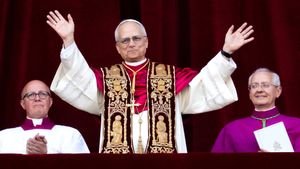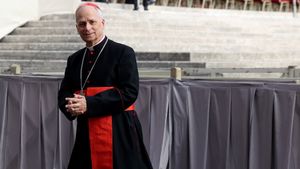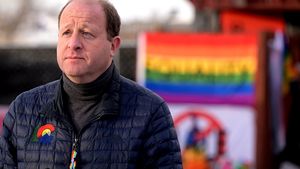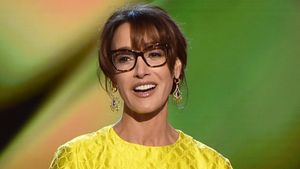Based between New York and Los Angeles, photographer Paul Mpagi Sepuya has developed a practice that meticulously explores the borders of the frame. Using mirrors as support, Sepuya challenges the viewer's eye by blurring the point at which the photograph meets the ground. The viewer, faced with a distorted and extended male body, is plunged into voyeurism, creeping along the side of the photograph to understand its subject.
Sepuya, however, never truly reveals his trick, often creating disorienting imagery that renders the male body infinitely complicated. Cruising his viewers in this way, the artist deploys a tasteful sensuality by layering his work. Sepuya writes, "Every photograph contains within it the instances of what preceded it. In thinking of photography this way, I am able to bring together and embrace the contradictions that photographic production generates: in its accelerated gratification of desire and simultaneous displacement of its subjects by the resulting image-objects."
OUT recently spoke with Sepuya about his vocation and technique.
OUT: When did you start working with photography?
Paul Mpagi Sepuya: What I'll say instead of that is that what drew me to making photographs was the immediacy of gratification, the rewarding sharpness and promise of equally sharp understanding or "affixing" of subjects, bodies, relationships. But those are all false promises of photography. "Working with photography" for me begins with acknowledging and handling the complications that arise from photographic production.

Mirror Study (2016)
Why are the poetics of witnessing so important to you?
I've never thought about that before, specifically. Witnessing is an interesting thing to think about because it implies truth, testimony, and other subjects that I'm not invested in working with for the sake of looking, a durational and vulnerable pleasure-position. What's important to me in my pictures is active, constructive looking that makes the viewer aware of their place within a chain of desire.
Have you worked with different media? If so, how does your approach to scopophilia change?
I work with photographs and other material generated from my ongoing portrait practice. So that can become many things: lose prints, stacks of material, books and zines, installations, individual photographs for display ... Within each is a different approach to durational time and the triangulated artist-subject-viewer relationship.

Model Study (2016)
Why have you chosen portraiture as a style?
I've chosen portraiture as a subject, and the foundation of my work. Portraiture and social, sexual and creative exchange are my drives.
In your artist statement, you mentioned "bodily engagement and intimacy, objectification and gratification, play and construction within the pictures." How do you decide when you can play and when you adhere to the medium's specific concerns?
It's an intuitive process and can't quite explain... but the medium's concerns are found in both the "straight" photograph--the portrait or still life--and the reconstruction and reflection. It's about the foundation of photography as indivisible from constructive desire.

Arcillo (2016)
The mirror works unveil an intimacy that feels paramount. Can you talk about your investment in mirrors?
Mirrors are just a tool, a convenient but complicated one, that lets me work with the "ground" of my studio in the way that I want. They allow me to construct the final photographs of the collage works with the recurring grounding while reinforcing the point-perspective of the camera, of a picture that in actuality doesn't exist anywhere in my studio, created only in the camera-eye position.
But then there's glass, the idea of a clear medium allowing the viewer to go right to the subject forgetting the medium through which the image is produced. There is the glass of the viewfinder and internal camera mirrors, of the lens, and of the reflecting mirror surface. I keep the smudges, dust, and bits of tape on the mirror so that it doesn't recede into a non-surface. Overall, every picture reveals it's own construction.
What are you currently working on?
I'm shooting portraits, almost finished setting up my studio in Los Angeles, finally gathering all of the equipment I need and have never had access to before, and trying to keep pushing this body of work.
Paul Mpagi Sepuya's work is currently on view at The Armory Show with Yancey Richardson Gallery, Booth 615, as well as at SPRING/BREAK Art Show, Room 2229.































